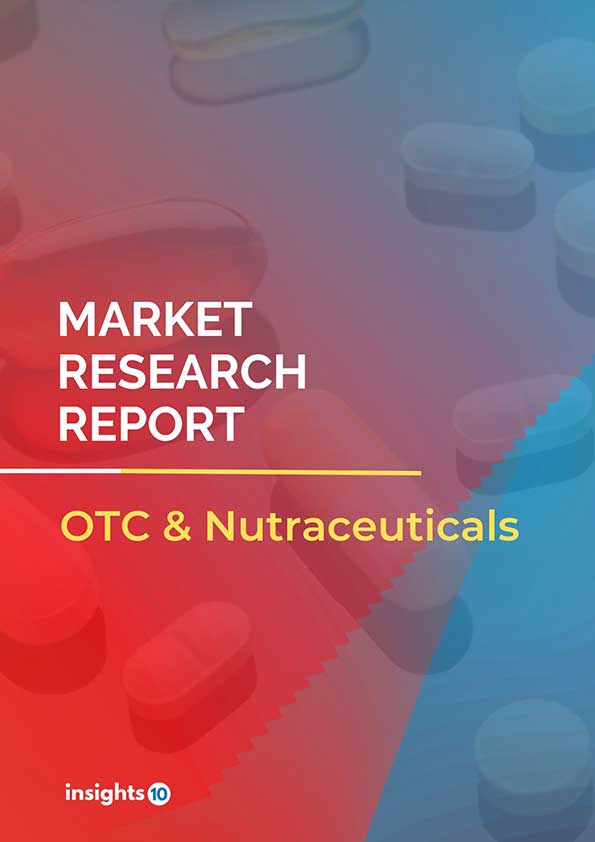New Zealand Nutritional Supplements Market Analysis
By 2030, it is anticipated that the New Zealand Nutrition and Supplements market will reach a value of $xx Bn from $xx Bn in 2022, growing at a CAGR of xx% during 2022-2030. The market is primarily dominated by local players such as BioBalance, Good Health, and Bioglan. The market for nutrition and supplements in New Zealand is primarily driven by government initiatives, increasing consumer awareness for health and lifestyle, and strict government regulations. The New Zealand nutrition and supplements market in New Zealand is segmented by Type, Product, application, and Distribution Channel.
Buy Now

New Zealand Nutrition and Supplements Market Analysis Summary
By 2030, it is anticipated that the New Zealand Nutrition and Supplements market will reach a value of $xx Bn from $xx Bn in 2022, growing at a CAGR of xx% during 2022-30.
The market for nutrition and supplements in New Zealand is mature but dynamic, with a primary focus on product differentiation. The market is segmented into categories like functional beverages, functional foods, and functional dietary supplements. The market offers a variety of highly innovative product lines, which are supported by the area's abundant biodiversity.
The market for nutrition and dietary supplements in New Zealand has seen a growing trend toward natural and plant-based products in recent years. A growing market for goods made with natural, sustainable, and ethically produced ingredients and free of artificial additives, preservatives, and chemicals is a reflection of this.
Market Dynamics
Market Growth Drivers Analysis
In New Zealand, the Therapeutic Products Bill (TPB) was presented for the first time. It includes clauses that would reclassify several medicinal foods and herbs as "drugs," making them unavailable to the general public without a prescription from a doctor. This will increase the entry of new pharmaceutical companies into the market.
Market Restraints
The New Zealand Ministry of Health controls the market for dietary supplements and nutrition products, and there are stringent rules and standards governing their manufacture and distribution. Because of the high costs involved in adhering to these regulatory requirements, this may be a barrier for some businesses.
Even though dietary supplements and nutrition products are becoming more and more popular, there is frequently little scientific proof to back up these products' efficacy claims. This can make it challenging for customers to evaluate the value and efficacy of these products, which might discourage them from making a purchase.
Competitive Landscape
Key Players
- BioBalance (NZL)
- Good Health (NZL)
- Bioglan (NZL)
- Comvita (NZL)
- Healtheries (NZL)
- Nature's Own (NZL)
- Blackmores (NZL)
- Swisse (NZL)
- Nestlé
- GlaxoSmithKline
Recent Notable Updates
January 2023: The Therapeutic Products Bill (TPB) was presented in New Zealand for its initial reading. It contains provisions that would reclassify a number of medicinal foods and herbs as "drugs," making them unavailable to the general public unless a prescription from a doctor. The proposed TPB in New Zealand would prohibit access to any food or herb with therapeutic potential.
June 2022: The Better Health Company (TBHC), the holding company for GO Healthy and Egmont, as well as CDH Investments, have agreed to be acquired by Nestlé Health Science. The Better Health Company will be completely acquired by Nestlé Health Science as part of the deal. This comprises the leading supplement brand in New Zealand, GO Healthy, the vitamin, mineral, and supplement manufacturing plant, New Zealand Health Manufacturing, based in Auckland, and the Egmont Manuka honey brand. For Nestlé Health Science, the acquisition makes strategic sense.
Healthcare Policies and Reimbursement Scenarios
A statutory body called Food Standards Australia New Zealand (FSANZ) creates food standards for both Australia and New Zealand. The Australia-New Zealand Food Standards Code (the Code), which outlines requirements for foods sold in New Zealand, contains a number of standards.
Some specialized nutritional products are covered by the New Zealand Public Health System (NZPHS), the country's government-run healthcare system, for people with certain medical conditions.
1. Executive Summary
1.1 Product Overview
1.2 Global Scenario
1.3 Country Overview
1.4 Healthcare Scenario in Country
1.5 Government Regulation in Country
1.6 Recent Developments in the Country
2. Market Size and Forecasting
2.1 Epidemiology of Disease
2.2 Market Size (With Excel and Methodology)
2.3 Market Segmentation (Check all Segments in Segmentation Section)
3. Market Dynamics
3.1 Market Drivers
3.2 Market Restraints
4. Competitive Landscape
4.1 Major Market Share
4.2 Key Company Profile (Check all Companies in the Summary Section)
4.2.1 Company
4.2.1.1 Overview
4.2.1.2 Product Applications and Services
4.2.1.3 Recent Developments
4.2.1.4 Partnerships Ecosystem
4.2.1.5 Financials (Based on Availability)
5. Reimbursement Scenario
5.1 Reimbursement Regulation
6. Methodology and Scope
Nutritional Supplements Market Segmentation
The Nutritional Supplements Market is segmented as mentioned below:
By Product (Revenue, USD Billion):
- Sports Nutrition
- Sports Food
- Sports Drinks
- Sports Supplements
- Fat Burners
- Green Tea
- Fiber
- Protein
- Green Coffee
- Others (Turmeric, Ginseng, Cranberry, Garcinia Cambogia)?
- Dietary Supplements
- Vitamins
- Minerals
- Enzymes
- Amino Acids
- Conjugated Linoleic Acids
- Functional Foods
- Probiotics
- Omega-3
- Others
By Consumer Group (Revenue, USD Billion):
- Infant
- Children
- Adults
- Pregnant
- Geriatric
By Formulation (Revenue, USD Billion):
- Tablets
- Capsules
- Powder
- Softgels
- Liquid
- Others
By Delivery Channel (Revenue, USD Billion):
- Chemists/Pharmacists
- Direct-to-Consumer Sales
- E-commerce
Methodology for Database Creation
Our database offers a comprehensive list of healthcare centers, meticulously curated to provide detailed information on a wide range of specialties and services. It includes top-tier hospitals, clinics, and diagnostic facilities across 30 countries and 24 specialties, ensuring users can find the healthcare services they need.
Additionally, we provide a comprehensive list of Key Opinion Leaders (KOLs) based on your requirements. Our curated list captures various crucial aspects of the KOLs, offering more than just general information. Whether you're looking to boost brand awareness, drive engagement, or launch a new product, our extensive list of KOLs ensures you have the right experts by your side. Covering 30 countries and 36 specialties, our database guarantees access to the best KOLs in the healthcare industry, supporting strategic decisions and enhancing your initiatives.
How Do We Get It?
Our database is created and maintained through a combination of secondary and primary research methodologies.
1. Secondary Research
With many years of experience in the healthcare field, we have our own rich proprietary data from various past projects. This historical data serves as the foundation for our database. Our continuous process of gathering data involves:
- Analyzing historical proprietary data collected from multiple projects.
- Regularly updating our existing data sets with new findings and trends.
- Ensuring data consistency and accuracy through rigorous validation processes.
With extensive experience in the field, we have developed a proprietary GenAI-based technology that is uniquely tailored to our organization. This advanced technology enables us to scan a wide array of relevant information sources across the internet. Our data-gathering process includes:
- Searching through academic conferences, published research, citations, and social media platforms
- Collecting and compiling diverse data to build a comprehensive and detailed database
- Continuously updating our database with new information to ensure its relevance and accuracy
2. Primary Research
To complement and validate our secondary data, we engage in primary research through local tie-ups and partnerships. This process involves:
- Collaborating with local healthcare providers, hospitals, and clinics to gather real-time data.
- Conducting surveys, interviews, and field studies to collect fresh data directly from the source.
- Continuously refreshing our database to ensure that the information remains current and reliable.
- Validating secondary data through cross-referencing with primary data to ensure accuracy and relevance.
Combining Secondary and Primary Research
By integrating both secondary and primary research methodologies, we ensure that our database is comprehensive, accurate, and up-to-date. The combined process involves:
- Merging historical data from secondary research with real-time data from primary research.
- Conducting thorough data validation and cleansing to remove inconsistencies and errors.
- Organizing data into a structured format that is easily accessible and usable for various applications.
- Continuously monitoring and updating the database to reflect the latest developments and trends in the healthcare field.
Through this meticulous process, we create a final database tailored to each region and domain within the healthcare industry. This approach ensures that our clients receive reliable and relevant data, empowering them to make informed decisions and drive innovation in their respective fields.
To request a free sample copy of this report, please complete the form below.
We value your inquiry and offer free customization with every report to fulfil your exact research needs.








































